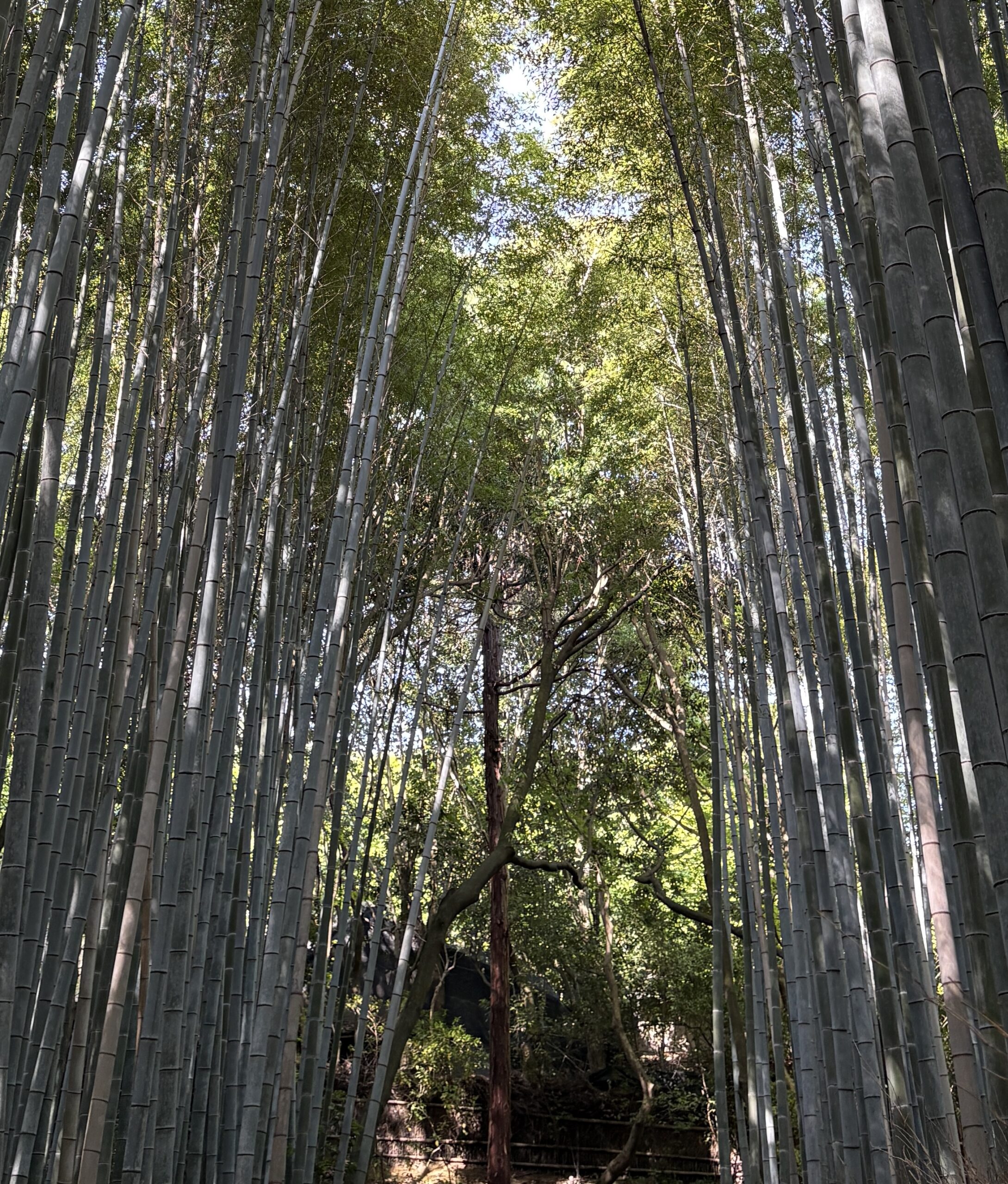Ultimate Arashiyama Day Trip Guide: What to Do
An Arashiyama day trip is one of the best ways to experience Kyoto’s mix of nature, tradition, and charm, all packed into a walkable, ridiculously scenic neighborhood.
From the iconic bamboo forest to hillside monkey views and centuries-old temples, this place delivers far more than most expect.
When I visited Arashiyama, I only had one day, but that was more than enough to understand why it’s such a beloved spot. It’s calm, wild, and deeply cultural all at once.
Whether you’ve got one full day in Kyoto or just want to escape the city buzz, Arashiyama is easily one of the most peaceful, scenic spots on this side of town.
And absolutely deserves a spot among the best areas in Kyoto. Here’s exactly how to spend your day exploring it right.
Arrive at Arashiyama Station

Your Arashiyama day trip will likely begin at Arashiyama Station, the gateway to the district’s main attractions. From Kyoto Station, take the JR Sagano Line to JR Saga-Arashiyama Station (about 15 minutes).
If you’re coming from central Kyoto around Shijo or Omiya, ride the Keifuku Randen Tram from Shijo-Omiya Station to Keifuku Arashiyama Station. Both routes are scenic and take roughly 15–30 minutes.
Trains are operating here all day and the best way is to pull up Google Maps and go from there, have your Suica card handy preloaded on your phone to take the train.
As soon as you step out of the station, you’ll start to feel the pace of Kyoto slow down.
There’s a small-town energy here, framed by the distant mountains and the soft buzz of tourists and locals making their way toward the forest paths.
You’ll pass little shops selling matcha snacks, souvenirs, and arts/crafts and charming cafes.
Even with just one day, Arashiyama is best explored at a relaxed pace. Though I’ll be honest with you, after 10:00 AM Arashiyama can get quite touristy in busy.
From the station, it’s a short walk to the bamboo grove, and everything else you’d like to see.
Visit Arashiyama Bamboo Forest

You can’t visit Arashiyama and not walk through the bamboo forest, it’s the most famous part of the entire area and one of the most photographed spots in Kyoto.
The moment you step onto the path and look up, you’ll get it. The towering green stalks stretch high into the sky, swaying gently as the wind moves through them.
It’s not just beautiful, it’s weirdly peaceful in a way that photos just can’t capture.
It’s quieter than you’d expect, especially if you arrive before 9:00 AM. The earlier you go, the better, not just for the vibe, but for your photos too.
Once mid-morning hits, tour groups and kimono-rental crowds start to trickle in, and it’s a lot harder to enjoy the stillness.
We came around 6:00 AM and shortly after 7:30 AM, we saw the crowds picking up already!
The main path isn’t long, around 500 meters, but you’ll find yourself slowing down just to take it in. It connects Tenryu-Ji Temple to Okochi Sanso Villa, so you can hit a few major sights along the way.
Even though the grove itself is free to enter, it feels like something sacred. Keep your voice low, walk slowly, and try not to rush through it like it’s just another tourist stop.
Photo tip: The best shots happen when you look up or shoot straight down the path. Bring a wide-angle lens or use your phone’s ultra-wide mode to really get the scale. And yes, it’s almost impossible not to take at least ten photos, I definitely did.
One thing to keep in mind: this is not a looping trail. Once you reach the end, you’ll either circle back toward Tenryu-Ji or continue up toward Okochi Sanso and the viewpoints over Kyoto (highly recommended if you have the time).
Tenryu-Ji Temple
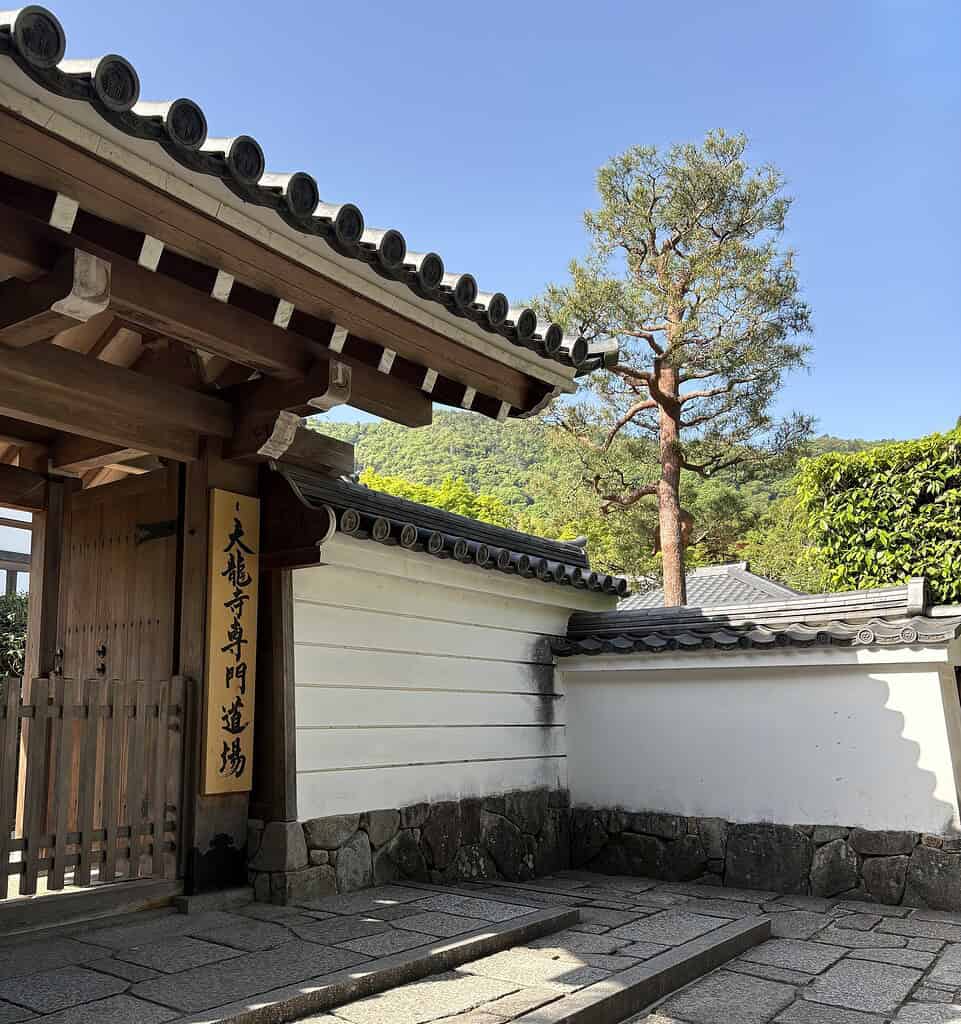
Right next to the bamboo grove is Tenryu-Ji Temple, one of Arashiyama’s key historical anchors, and a UNESCO World Heritage Site, in case you needed more reason to step inside.
Founded in 1339, it’s the most important temple in the area and a must if you’re even mildly into Japanese gardens, Zen architecture, or the kind of place that makes you stop and stare at a pond for 10 minutes.
I visited Tenryu-Ji right after the bamboo grove, and the contrast was perfect. After the vertical drama of the forest, the temple’s gardens feel open, wide, and calm in a totally different way.
A looping path winds around Sogenchi Teien, a beautifully landscaped pond backed by mountains. It’s a classic example of shakkei (borrowed scenery), and even if that term means nothing to you now, you’ll get it when you see it.
Inside the temple buildings, you’ll find traditional tatami rooms with sliding doors and painted screens, it’s understated, but in that “wow this place is actually older than most countries” kind of way. Shoes come off at the entrance, so wear something easy to slip on and off.
Entry fee is required, but it’s affordable, at only 500 Yen, and you can choose just the garden or both the garden and temple buildings. You’ll find yourself spending around 30 to 45 minutes.
I recommend doing both. The combo ticket gives you more flexibility, and the indoor views looking out over the garden are some of the best in the whole place.
The temple played a major role in Kyoto’s religious and political history and has been rebuilt multiple times due to fires, a common theme among ancient Japanese temples.
Enjoy Matcha and Mochi in Arashiyama
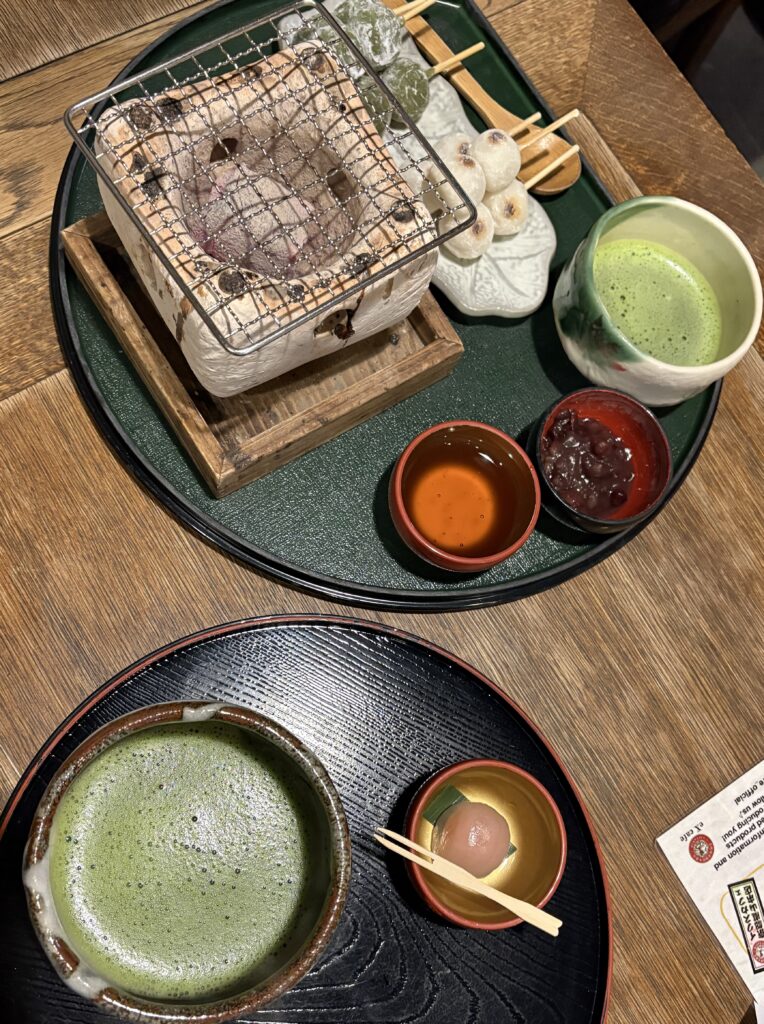
One of the best parts of any Arashiyama day trip is slowing down for a cafe stop, and this area has no shortage of them.
Many spots serve up all the Japanese favorites: matcha, mochi, and traditional teas, often with views to match.
You’ll find everything from riverside cafes with sleek interiors to more hidden shops that feel like a total escape from the tourist trail.
The most famous cafe in the area is easily % Arabica, known for its riverside views and minimalist design.
We were planning to check it out, but the line was absolutely ridiculous. Like, “are we waiting for coffee or front-row seats at a concert?” kind of long. Honestly, there are much better options nearby that aren’t nearly as crowded.
One place I recommend is eXcafe Kyoto Arashiyama Main Store. It’s got that perfect blend of peaceful setting and proper local flavor.
You can get a full matcha set, roasted mochi on skewers (with your own mini charcoal grill), and Japanese sweets that are as photogenic as they are delicious.
It’s slightly tucked away from the main street, which helps keep the vibe chill even during peak hours.
Another gem is Chasanraku, a cozy café that feels more like a hidden tea retreat. Their matcha is rich and smooth, the wagashi (traditional sweets) are beautifully presented, and the calm atmosphere is a welcome break from the more tourist-heavy spots nearby.
Check Out Arashiyama Monkey Park
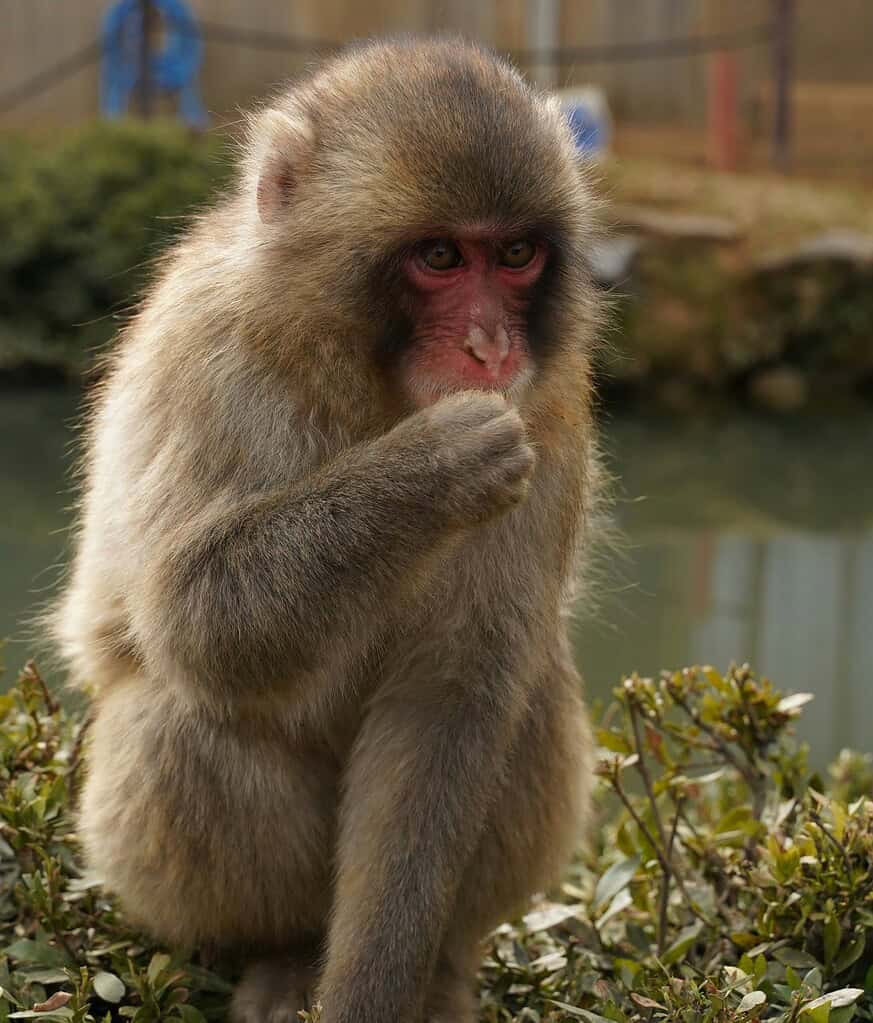
Yes, Arashiyama has monkeys, and yes, it’s totally worth the uphill hike to see them. Located across the Togetsukyo Bridge on the opposite side of the river, Iwatayama Monkey Park is one of those spots that sounds touristy but ends up being a highlight.
The walk to the top takes about 20–30 minutes depending on your pace, and while it’s not overly steep, it does count as a mini workout. Bring water, especially if you’re visiting in warmer months.
Once you reach the top, you’re rewarded with panoramic views of Kyoto and a bunch of semi-wild monkeys just doing their thing, grooming each other, chasing around, or lounging in the sun like tiny zen masters.
They’re Japanese macaques, also known as snow monkeys, and they’re completely used to visitors (as long as you follow the rules: no touching, no eye contact, and no feeding outside the designated hut).
Speaking of which, inside the feeding hut, you can buy snacks and feed the monkeys from behind a fenced area, which is basically the reverse zoo setup.
You’re in the cage, and the monkeys are free. It’s a fun twist and makes for some hilarious photos.
I went mid-afternoon and it wasn’t too crowded, but if you want fewer people and cooler temps, go earlier in the day. Just note that the park can close during bad weather or extreme heat, so double-check before you commit to the hike.
This is definitely one of those stops that rounds out your day trip in Arashiyama, a mix of nature, weirdness, and great views you won’t get anywhere else in Kyoto.
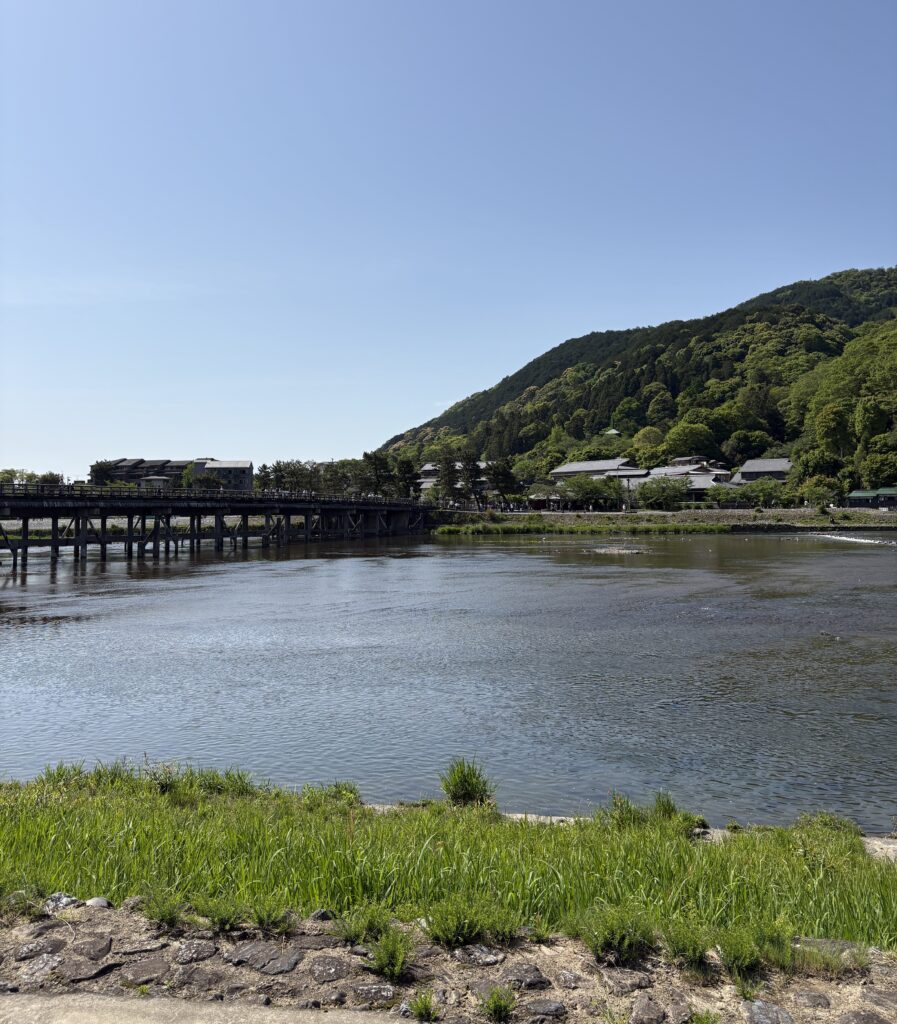
Saga-Toriimoto Preserved Street
After the Monkey Park, head north toward one of Arashiyama’s most underrated gems: Saga-Toriimoto Preserved Street.
This area feels like a total time warp, a quiet, narrow road lined with traditional machiya-style wooden homes, some of which are centuries old.
It’s far less crowded than the bamboo forest or Tenryu-Ji, and it gives you a real sense of Kyoto’s slower, rural past.
There’s not a lot to do here in the traditional touristy sense, and that’s kind of the point. The charm is in the walk itself, and for me, that’s the best angle to visit and see Kyoto .
A few homes have been converted into cafes, tea houses, or local craft shops, but for the most part, it’s just a peaceful stretch of road that feels like a break from the rest of the day’s sightseeing.
I didn’t expect to like it as much as I did, but walking through this area felt like hitting pause.
No crowds, no noise, just old architecture, little gardens, and mountain views peeking through in the background.
If you’ve got a bit of extra time (and energy), this route also connects easily to Otagi Nenbutsuji Temple, which makes for a great final stop before looping back toward the main part of Arashiyama.

Otagi Nenbutsuji Temple
Tucked at the very edge of Arashiyama’s tourist map, Otagi Nenbutsuji Temple is one of the weirdest, most delightful surprises in Kyoto, and it’s totally worth the walk.
The temple is best known for its collection of 1,200 stone Rakan statues, each carved with a unique, often hilarious facial expression.
You’ll see everything from monks laughing hysterically to one holding a boom box. It’s peaceful, beautiful, and slightly bizarre in the best way.
Getting here takes a little effort, it’s about a 15–20 minute walk from Saga-Toriimoto Preserved Street, mostly uphill, so be prepared with water and decent shoes.
But once you arrive, you’ll likely find it quiet, with just a handful of other visitors wandering around.
I found this to be one of the most unexpectedly memorable stops on my Arashiyama day trip.
It doesn’t have the crowds or grandeur of Tenryu-Ji, but that’s exactly why it stands out. The forested setting, the moss-covered statues, and the overall vibe make it feel like a hidden pocket of calm and character.
There’s a small entry fee, usually around ¥300, and it’s cash only, so keep some yen on hand if you plan to visit.
You don’t need much time here, 30 minutes is plenty, but it’s a perfect way to end the day on a quiet, curious note before heading back down toward central Arashiyama.
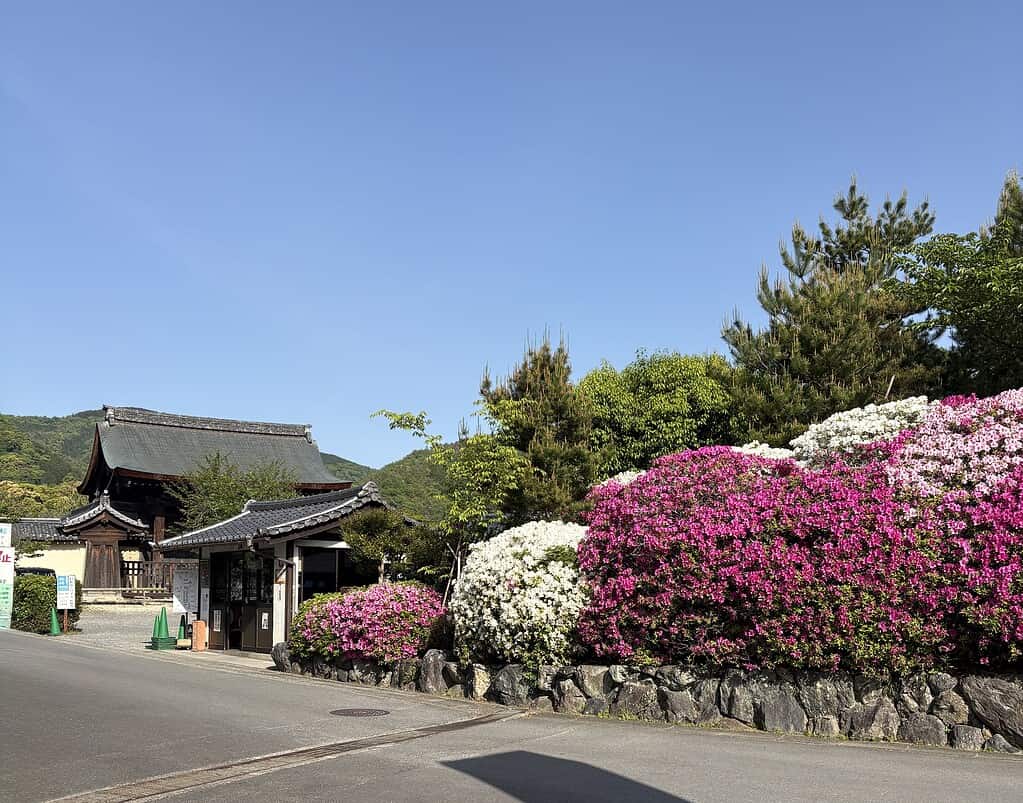
Is Arashiyama Worth visiting for a Day Trip? Final Thoughts
I’ll be honest, Arashiyama wasn’t high on my radar at first. I remember scrolling past it while planning things to do in Kyoto, seeing the bamboo forest pop up over and over.
It looked pretty… but also felt like one of those overly touristy spots everyone posts on Instagram and forgets five minutes later.
But one of the friends I was traveling with kept bringing it up, like, relentlessly. Eventually I gave in and started digging deeper.
That’s when I realized this area isn’t just about the bamboo grove. There’s a whole side of Arashiyama that doesn’t get enough attention, from peaceful temples and mountain views to quiet preserved streets and quirky little statues in the forest.
So yes, Arashiyama is absolutely worth visiting for a day trip. Whether you’re based in Kyoto, coming from Osaka, or even squeezing it in during an extended Tokyo itinerary as you visit Kyoto, it delivers something unique.
Just do yourself a favor and get to the bamboo grove as early as possible, like before 8:00 AM if you can.
It’s gorgeous, no doubt, but it’s also the most crowded part of the area and loses a lot of its magic once the tour groups roll in.
Everything else? Peaceful, charming, and far more rewarding than I expected. It ended up being one of my favorite days in Kyoto.
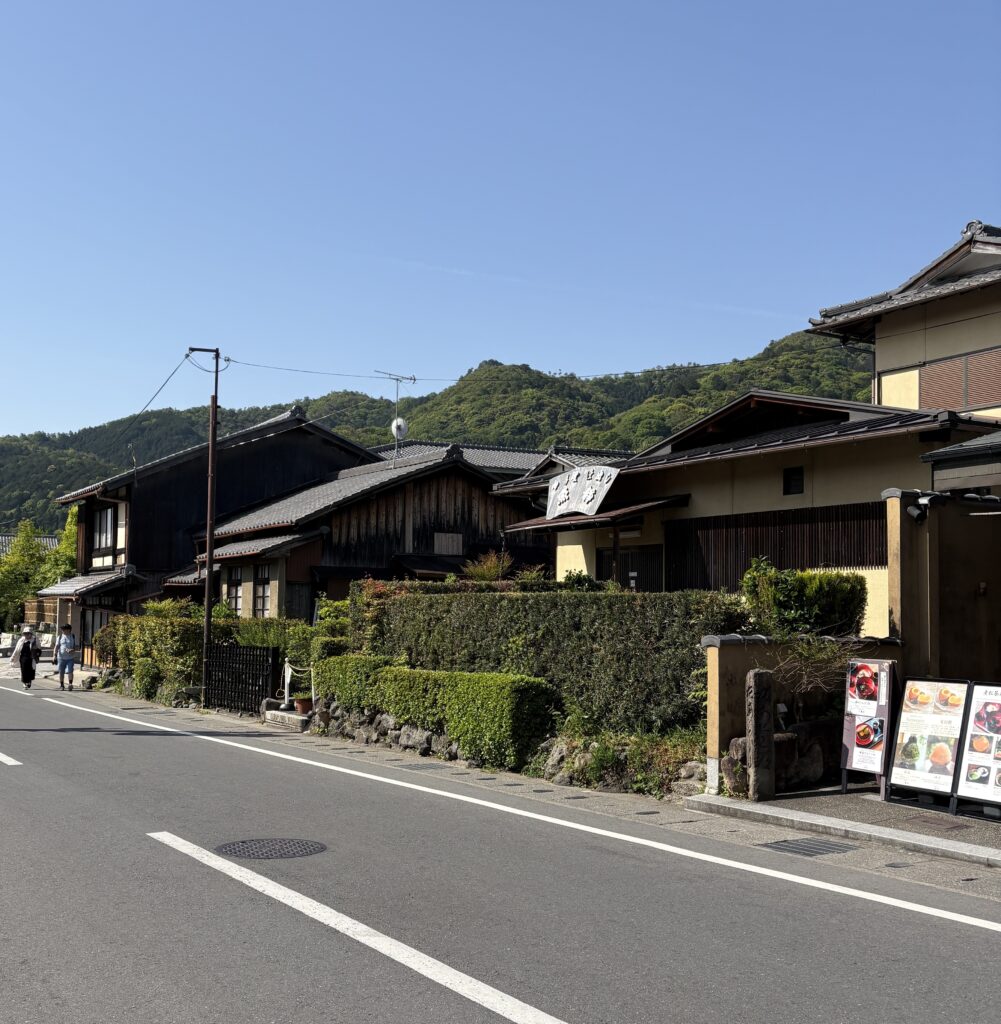
How long do you need for an Arashiyama day trip?
Plan for at least 5–6 hours. That gives you time to see the bamboo grove, Tenryu-Ji, the Monkey Park, and a few quieter spots without rushing. If you add in Otagi Nenbutsuji or cafés, a full day is ideal.
Is Arashiyama worth visiting if I only have one day in Kyoto?
Yes, Arashiyama packs in nature, temples, and great views all in one walkable area. It’s one of the best ways to experience Kyoto in a single day without running around the entire city.
Can you visit Arashiyama on a day trip from Osaka or Tokyo?
Yes but it’s a longer day. From Osaka, it’s under an hour by train. From Tokyo, it’s longer (around 2.5 hours), but if you’re already heading to Kyoto, spending a day in Arashiyama is well worth the stop.
What should I not miss on an Arashiyama day trip?
The bamboo grove is the main draw, but don’t skip Tenryu-Ji, the Monkey Park, and Otagi Nenbutsuji if you have time. They round out the experience and show the quieter side of Arashiyama.

